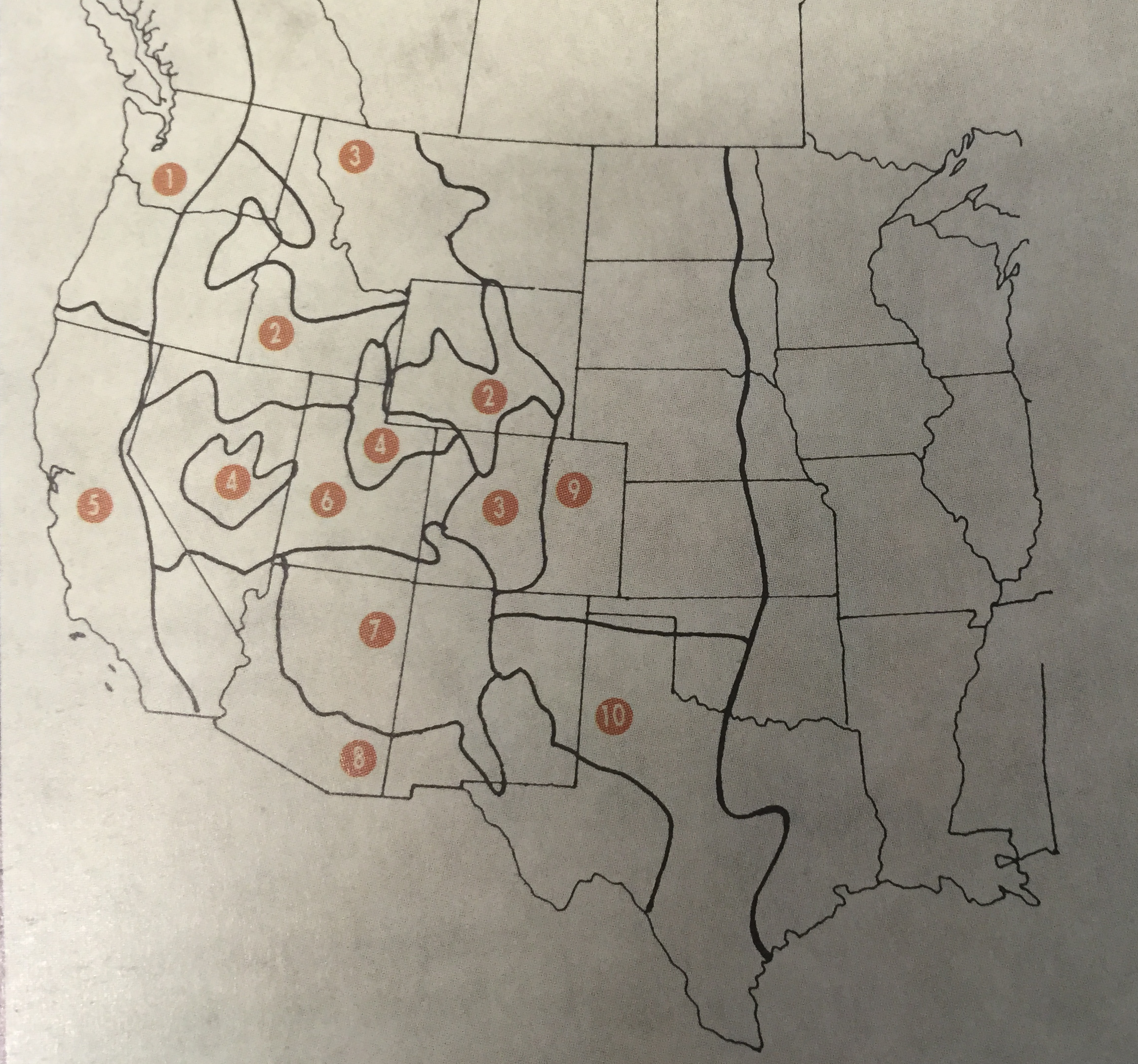The Western Bat Species Regional Priority Matrix is a product of the Western Bat Working Group Workshop held in Reno, Nevada, February 9-13, 1998. The matrix is intended to provide states, provinces, federal land management agencies, interested organizations and individuals a better understanding of the overall status of a given bat species throughout its western North American range. Subsequently, the importance of a single region or multiple regions to the viability and conservation of each species becomes more apparent. The matrix should also provide a means to prioritize and focus population monitoring, research, conservation actions, and the efficient use of limited funding and resources currently devoted to bats.
Multiple Habitat Species
| Region 1 | Region 2 | Regions 3, 4, 9, 10 | Region 5 | Region 6 | Regions 7, 8 | |
| Antrozous pallidus, pallid bat | • | • | • | • | • | • |
| Eptesicus fuscus, big brown bat | • | • | • | • | • | • |
| Idionycteris phyllotis, Allen’s big-eared bat | – | – | – | – | • | • |
| Myotis auriculus, southwestern myotis | – | – | – | – | – | • |
| Myotis californicus, California myotis | • | • | • | • | • | • |
| Myotis ciliolabrum, western small-footed myotis | • | • | • | • | • | • |
| Myotis evotis, long-eared myotis | • | • | • | • | • | • |
| Myotis keenii, Keen’s myotis | • | – | – | – | – | – |
| Myotis lucifugus, little brown myotis | • | • | • | • | • | • |
| Myotis occultus, Arizona myotis | – | – | – | – | – | • |
| Myotis septentrionalis, northern myotis | – | – | • | – | – | – |
| Myotis thysanodes, fringed myotis | • | • | • | • | • | • |
| Myotis volans, long-legged myotis | • | • | • | • | • | • |
| Myotis yumanensis, Yuma myotis | • | • | • | • | • | • |
| Tadarida brasiliensis, Mexican free-tailed bat | • | – | • | • | • | • |
Tree Roosting Species
| Region 1 | Region 2 | Regions 3, 4, 9, 10 | Region 5 | Region 6 | Regions 7, 8 | |
| Lasiurus blossevillii, western red bat | – | – | – | • | • | • |
| Lasiurus borealis, eastern red bat | – | – | • | – | – | – |
| Lasiurus cinereus, hoary bat | • | • | • | • | • | • |
| Lasiurus xanthinus, western yellow bat | – | – | – | • | – | • |
| Lasionycteris noctivagans, silver-haired bat | • | • | • | • | • | • |
Cliff Roosting Species
| Region 1 | Region 2 | Regions 3, 4, 9, 10 | Region 5 | Region 6 | Regions 7, 8 | |
| Euderma maculatum, spotted bat | • | • | • | • | • | • |
| Eumops perotis, western mastiff bat | – | – | – | • | • | • |
| Eumops underwoodi, Underwood’s mastiff bat | – | – | – | – | – | • |
| Nyctinomops femorosaccus, pocketed free-tailed bat | – | – | – | • | – | • |
| Nyctinomops macrotis, big free-tailed bat | – | – | • | • | • | • |
| Parastrellus hesperus, western pipistrelle | • | • | • | • | • | • |
Cave Roosting Species
| Region 1 | Region 2 | Regions 3, 4, 9, 10 | Region 5 | Region 6 | Regions 7, 8 | |
| Choeronycteris mexicana, Mexican long-tongued bat | – | – | – | • | – | • |
| Corynorhinus townsendii, Townsend’s big-eared bat | • | • | • | • | • | • |
| Leptonycteris curasoae, lesser long-nosed bat | – | – | – | – | – | • |
| Leptonycteris nivalis, Mexican long-nosed bat | – | – | – | – | – | • |
| Macrotus californicus, California leaf-nosed bat | – | – | – | • | – | • |
| Mormoops megalophylla, ghost-faced bat | – | – | – | – | – | • |
| Myotis velifer, cave myotis | – | – | • | – | – | • |
Map of Ecoregions

1 Marine Regime Mountains
2 Intermountain Semi-Desert Province
3 Temperate Steppe Regime Mountains
4 Temperate Desert Regime Mountains
5 Mediterranean Division
6 Intermountain Semi-Desert and Desert Province
7 Colorado Plateau Semi-Desert / Arizona – New Mexico Mountains and Semi-Desert
8 Tropical / Subtropical Desert Division
9 Temperate Steppe Division
10 Tropical / Subtropical Steppe Division
